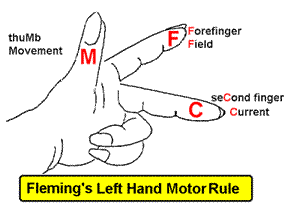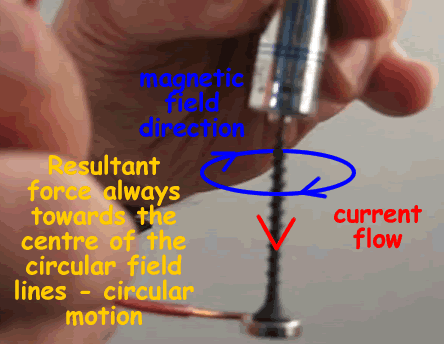The Motor Effect
When a wire carrying an electric current is placed in a magnetic field, it may experience a force. Why should this be? It is 'simples' really... When a wire carries a current it has a magnetic field around it. (You did this when you studied electromagnetism). The field from the fixed magnet interacts with the field due to the current. This can cause the wire to be attracted or repelled from the fixed magnet. If this force is strong enough (meaning that the wire has a small enough mass so that gravity doesn't stop it moving) you will see the effect of the attraction/repulsion in movement of the wire. The force experienced by the wire is at a maximum when the current is flowing at right angles to the field lines of the fixed magnet and is zero when it is parallel to them. The size of the force on the wire can be increased by:
For the AQA GCSE you should be able to use diagrams and/or other appropriate information to explain how electromagnetic effects are used in simple d.c. motors and circuit breakers. NB Details of the split ring commutator, for reversing the current to a d.c. motor each half turn, will not be examined. Here is an interesting demonstration that you could try at home!
|
Follow me... |






